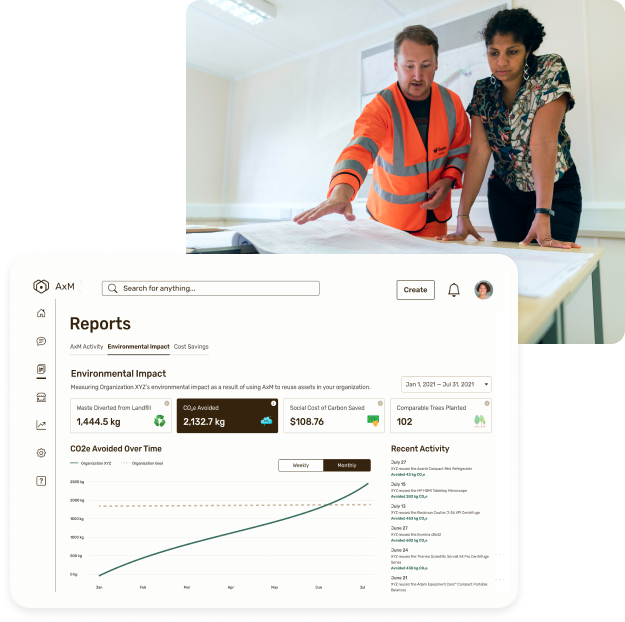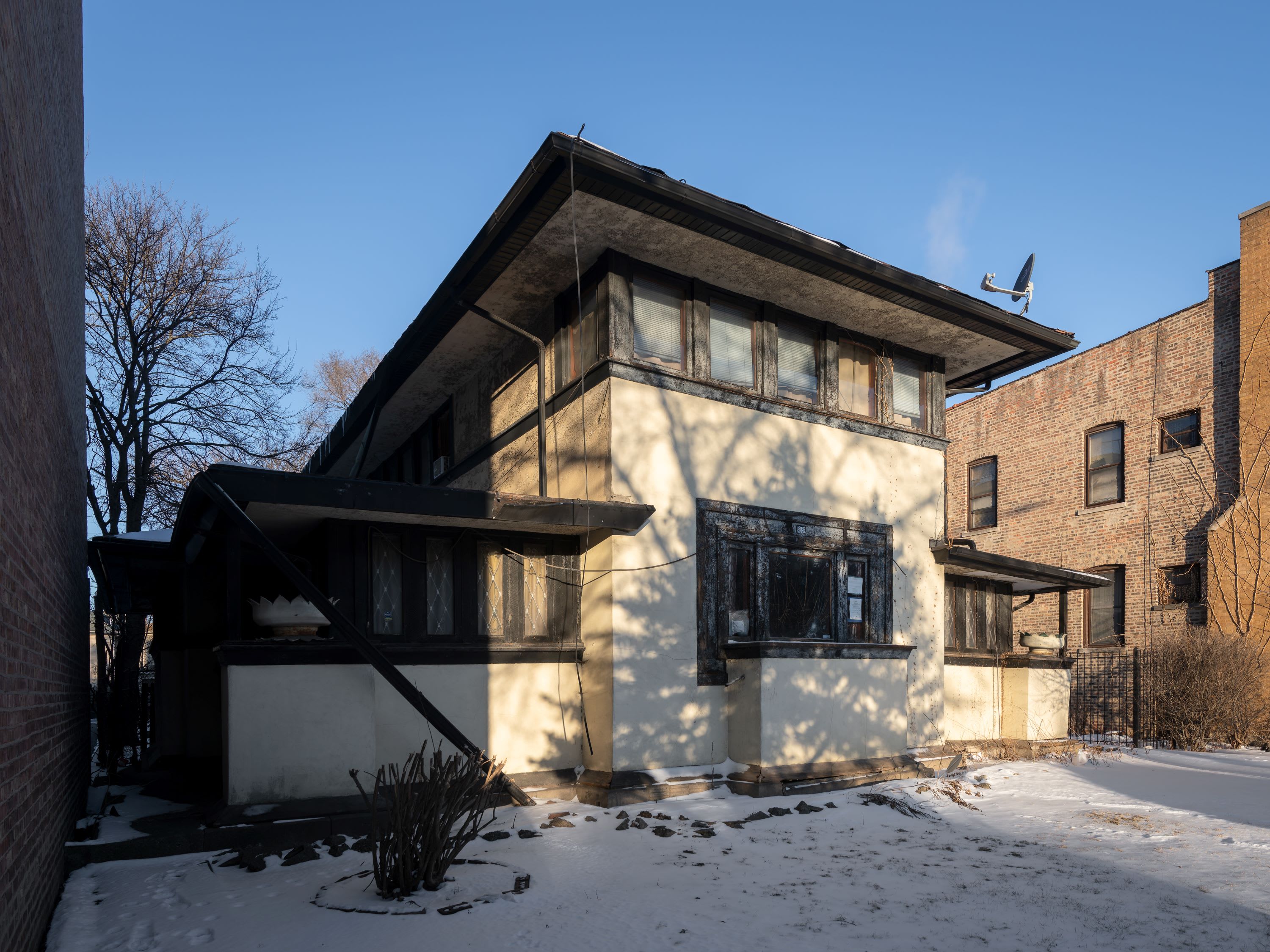Rheaply redefines circular economy in architecture
On Earth Day 2022, we speak to Rheaply founder Garry Cooper Jr about his innovative business that tackles reuse and upcycling in architecture and construction

When a building gets demolished, or refurbished, what happens to its parts? They might get destroyed, or just thrown away to the back of a junkyard, never to be seen again – or, they will get reused. And it's that last option that Garry Cooper Jr, founder of Rheaply, decided to tackle when he launched his enterprise asset management venture in 2016. Rheaply is a digital platform that serves the circular economy, essentially enabling the rehoming of parts of buildings and equipment just before a structure is torn down, placing them in new, local buildings in construction, in a bid to enhance upcycling, sustainable architecture and local enterprise.
Ohio-born Cooper is now based in Chicago and the idea to found Rheaply was born there, thanks to his keen observation skills and entrepreneurial mind (while now he operates in the construction and architecture world, his background is in science). ‘It was super organic,' he says. ‘I came to Chicago in 2008, and studied at Northwestern University, trying to find a cure for Parkinson’s Disease. I noticed in our lab we had lots of material that we were not using, from chairs, to plastics, chemicals, and I kept hearing people saying, oh if only I had this or that, and I knew we had whatever they needed somewhere in our closet. So I started a resource sharing platform – it was basically a cart!'

Garry Cooper Jr
The humble cart soon grew into a business, as demand increased. The concept caught on as it offered the opportunity for landlords to swiftly, easily and sustainably get rid of parts of their building that would otherwise be scrapped; this expanded from smaller-scale equipment and furniture to larger elements, such as doors, window frames, façade panels and anything in between. At the same time, new owners could acquire all these features to incorporate into their properties in an eco-friendly and cost-efficient way.
‘I thought, all this is reusable and has embodied energy,' says Cooper, who emphasises that timing is key in making everything run in the most efficient way in this business, which is all about wasting less and lowering carbon emissions in the building industry – which currently accounts for a significant part of the world’s emissions, up to 40 per cent in some countries, such as the UK. ‘I have buildings I scope out and inventory everything in them, even before they become available. So, things get rehomed before the building is in fact deconstructed – it means there's even less transport carbon involved.'

Rheaply can now manage the reuse of everything from artwork and interiors to large steel elements and infrastructure through a dedicated digital platform. The team works with contacts and the local community to create inventories of buildings to be demolished, which clients then have access to through a website and app, making securing reusable parts for new projects smooth and fuss-free. It's all quite local – as the company doesn't operate by storing the elements or shipping far. They just transport them directly to a new construction site to be used immediately. Keeping things local is important in managing the company's (and associated projects’) carbon footprint.
Impact is measured in various ways – in a financial sense, in how much money is saved or how much economic opportunity is granted through this scheme; in terms of waste diversion and how much waste is diverted from landfill; and through carbon emissions savings, thanks to reuse. A special carbon emission calculator tool, to be launched through the platform soon, is set to provide further clarity and visibility for the operation and its users.

What started off as a Chicago business is now expanding substantially due to high demand, with Rheaply operations aiming to launch in up to 50 US cities in the next few years, while Cooper's some 50-strong team is expected to grow more than two-fold in the next year alone. A San Francisco wing is throwing open its door this month. As Rheaply’s mission spreads through word-of-mouth among industry specialists – Cooper has a network that includes several Fortune 100 level companies in the US, as well as a range of contractor and architecture studios – expansion seems assured.
Wallpaper* Newsletter
Receive our daily digest of inspiration, escapism and design stories from around the world direct to your inbox.
‘The circular economy is a behavioural change. And once you’ve done something, you always look for something more, it makes you more aware. Even in a small way, it makes a big difference. [If people don't recycle more in this way, it] isn’t because we don’t want to, it’s just visibility,' Cooper stresses enthusiastically – and Rheaply seems perfectly positioned to amend this.

INFORMATION
Ellie Stathaki is the Architecture & Environment Director at Wallpaper*. She trained as an architect at the Aristotle University of Thessaloniki in Greece and studied architectural history at the Bartlett in London. Now an established journalist, she has been a member of the Wallpaper* team since 2006, visiting buildings across the globe and interviewing leading architects such as Tadao Ando and Rem Koolhaas. Ellie has also taken part in judging panels, moderated events, curated shows and contributed in books, such as The Contemporary House (Thames & Hudson, 2018), Glenn Sestig Architecture Diary (2020) and House London (2022).
-
 Put these emerging artists on your radar
Put these emerging artists on your radarThis crop of six new talents is poised to shake up the art world. Get to know them now
By Tianna Williams
-
 Dining at Pyrá feels like a Mediterranean kiss on both cheeks
Dining at Pyrá feels like a Mediterranean kiss on both cheeksDesigned by House of Dré, this Lonsdale Road addition dishes up an enticing fusion of Greek and Spanish cooking
By Sofia de la Cruz
-
 Creased, crumpled: S/S 2025 menswear is about clothes that have ‘lived a life’
Creased, crumpled: S/S 2025 menswear is about clothes that have ‘lived a life’The S/S 2025 menswear collections see designers embrace the creased and the crumpled, conjuring a mood of laidback languor that ran through the season – captured here by photographer Steve Harnacke and stylist Nicola Neri for Wallpaper*
By Jack Moss
-
 We explore Franklin Israel’s lesser-known, progressive, deconstructivist architecture
We explore Franklin Israel’s lesser-known, progressive, deconstructivist architectureFranklin Israel, a progressive Californian architect whose life was cut short in 1996 at the age of 50, is celebrated in a new book that examines his work and legacy
By Michael Webb
-
 A new hilltop California home is rooted in the landscape and celebrates views of nature
A new hilltop California home is rooted in the landscape and celebrates views of natureWOJR's California home House of Horns is a meticulously planned modern villa that seeps into its surrounding landscape through a series of sculptural courtyards
By Jonathan Bell
-
 The Frick Collection's expansion by Selldorf Architects is both surgical and delicate
The Frick Collection's expansion by Selldorf Architects is both surgical and delicateThe New York cultural institution gets a $220 million glow-up
By Stephanie Murg
-
 Remembering architect David M Childs (1941-2025) and his New York skyline legacy
Remembering architect David M Childs (1941-2025) and his New York skyline legacyDavid M Childs, a former chairman of architectural powerhouse SOM, has passed away. We celebrate his professional achievements
By Jonathan Bell
-
 The upcoming Zaha Hadid Architects projects set to transform the horizon
The upcoming Zaha Hadid Architects projects set to transform the horizonA peek at Zaha Hadid Architects’ future projects, which will comprise some of the most innovative and intriguing structures in the world
By Anna Solomon
-
 Frank Lloyd Wright’s last house has finally been built – and you can stay there
Frank Lloyd Wright’s last house has finally been built – and you can stay thereFrank Lloyd Wright’s final residential commission, RiverRock, has come to life. But, constructed 66 years after his death, can it be considered a true ‘Wright’?
By Anna Solomon
-
 Heritage and conservation after the fires: what’s next for Los Angeles?
Heritage and conservation after the fires: what’s next for Los Angeles?In the second instalment of our 'Rebuilding LA' series, we explore a way forward for historical treasures under threat
By Mimi Zeiger
-
 Why this rare Frank Lloyd Wright house is considered one of Chicago’s ‘most endangered’ buildings
Why this rare Frank Lloyd Wright house is considered one of Chicago’s ‘most endangered’ buildingsThe JJ Walser House has sat derelict for six years. But preservationists hope the building will have a vibrant second act
By Anna Fixsen